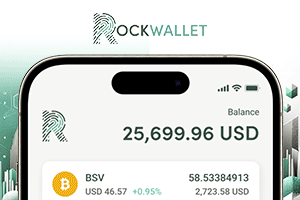|
Getting your Trinity Audio player ready...
|
America’s block reward miners may become collateral damage in President Donald Trump’s trade war with, well, everyone, but it’s the China tariffs that have miners crying foul.
- Bitmain mining rigs caught in trade war crossfire
- U.S. mining economic impact
- BTC transaction volume hits 18-month low
- Not every miner interested in AI pivot
- January’s production tale of the tape
During last year’s presidential campaign, then-candidate Trump expressed a desire for “all the remaining [BTC] to be MADE IN THE USA!!!” Trump followed that up with pledges to rejig America’s energy markets to ensure a cheap supply of electricity so the country could become “the world’s undisputed [BTC] mining powerhouse.”
U.S. miners are still waiting on the specifics of Trump’s promises, but other Trump policies aren’t proving music to miners’ ears. Last week, Bloomberg reported that new shipments of the Chinese-built mining rigs on which most U.S. miners rely are being delayed under increased federal scrutiny of Chinese technology transfers.
The enhanced scrutiny began under Trump’s predecessor, Joe Biden, whose Federal Communications Commission (FCC) suspected Xiamen Sophgo Technologies, the artificial intelligence (AI)-focused affiliate of Chinese mining rig hardware manufacturer Bitmain, of dodging U.S. export controls.
Basically, Sophgo was accused of transferring chips produced by Taiwan Semiconductor Manufacturing Company (TSMC) (NASDAQ: TSM) to Chinese tech giant Huawei, which used the chips in its AI processors. Last month, the Department of Commerce added Sophgo to its AI chip blacklist for posing “a risk to U.S. and allied national security.”
Bitmain, which boasts a 90% share of the mining rig market, has denied involvement in any efforts to circumvent U.S. law. But U.S. Customs and Border Protection (CBP) is now holding up millions of dollars worth of Bitmain rigs at U.S. entry points.
New York-based Bit Digital (NASDAQ: BTBT) reportedly has 700 Bitmain rigs sitting in customs limbo, while an unspecified Oklahoma-based miner has yet to learn the fate of some 2,000 rigs destined for its operations. Letters to some of the intended recipients of these rigs reportedly indicate they have been “seized and subject to forfeiture.”
Even if these rigs eventually get to their intended recipients, Trump’s recent imposition of 10% tariffs on all Chinese-made products entering the U.S. means new rigs will now cost more than the companies originally budgeted for.
Given mining’s razor-thin (often nonexistent) profit margins, the increased costs of acquiring the latest hardware could lead U.S. miners to quietly establish more ‘offshore’ operations. Either that, or surrender market share to their Chinese counterparts. Just wait until the infamously competitive Trump hears about that.
The friction may prove beneficial for U.S.-based rig-maker Auradine, whose recent hardware releases like the Teraflux AT2880 are said to match the performance of Bitmain’s current flagship model, the Antminer S21. If we were Auradine, we’d be sidling up to Trump’s confidantes wearing ‘made in USA’ lapel pins pronto.
Jobs, jobs, jobs
A new report on The Economic Benefits of Bitcoin Mining to the United States and Top States—conducted by Perryman Group analysts on behalf of the Texas Blockchain Council and The Digital Chamber (formerly The Chamber of Digital Commerce)—claims that the domestic mining sector produces “total economic benefits” of $4.1 billion and over 31,000 jobs (including ‘multiplier effects’).
Whether you buy these numbers or not, Texas claims the largest slice of the alleged benefits, with $1.7 billion in gross product and 12,200 jobs, with Georgia well back in second ($317 million, 2,300 jobs) and New York third ($226 million, 1,600 jobs).
The report offers up the usual pablum about how BTC miners can “adjust power usage in times of extreme grid stress,” which makes it sound like a purely altruistic endeavor. In fact, these scenarios often require BTC miners to get paid for not accessing the grid, but ‘corporate welfare’ doesn’t jibe with miners’ publicly minded PR, so ixnay on the elfareway talk, okay?
The report also hypes other vague “benefits to their communities” provided by miners while studiously avoiding any talk of the numerous legal efforts by frustrated residents to get miners to abide by local noise bylaws.
Bernstein analysts recently pegged U.S. miners’ share of global hashrate at around 29%, while other estimates have put this figure as high as 36%.
BTC: Missing in (trans)action
BTC’s mining difficulty rate enjoyed a rare retreat to 108 trillion in January, thanks to cold weather sweeping the U.S. and the corresponding spike in the energy price required to mine a BTC block. However, the difficulty resumed its upward trajectory last week, setting yet another all-time high of 114.1 trillion.
Higher difficulty raises the cost of producing a BTC block, and if the token’s fiat price doesn’t enjoy a corresponding rise, miners run the very real risk of mining at a loss. Worse, there are still the odd solo miners winning a block on their home PC through sheer luck, as happened last week, adding Raspberry PI insult to financial injury.
Worse, the number of transactions within BTC blocks has dropped to daily lows not seen in a year and a half. Fewer transactions mean fewer fees paid, and with the block reward halving to 3.125 BTC last year, Trump’s tariffs raising the price of hardware, and mining difficulty rising, this is a stormy sea with few safe harbors.
Having surrendered any interest in serving as the ‘peer-to-peer electronic cash’ described in the original Bitcoin white paper, an ever-larger percentage of all BTC now sits collecting dust in cold wallets held by issuers of BTC-based exchange-traded funds (ETFs) and/or other pseudo-custodial entities.
In other words, BTC doesn’t really do much beyond rise or fall in value, in part because its transaction fees still vastly exceed those of other payment options, including the much-maligned credit card networks, making small transactions economically unfeasible.
This lack of transaction volume poses threats to the BTC network’s future security, as miners without access to capital could find themselves squeezed out of this market. That will further concentrate BTC’s already concentrated mining sector in fewer and fewer hands, allowing them to switch off rigs as difficulty falls, presenting a more tempting target to bad actors intent on compromising BTC’s compromised security.
The price of dissing AI
While BTC’s price has soared since Trump’s election, so have the costs associated with finding new blocks. The industry average cost of mining a single BTC—including depreciation of mining rigs and the constant need to replace older rigs to remain competitive—is around $88,400, while the token’s price has dipped as low as $92,000 this month.
This has led many mining operators to ‘pivot to AI’ as tech giants like Google (NASDAQ: GOOGL), Meta (NASDAQ: META), and Microsoft (NASDAQ: MSFT) are locked in their own cutthroat competition and just can’t get enough AI/high-performance computing (HPC) data center capacity.
On January 31, block reward miner Bitfarms (NASDAQ: BITF) announced it had “engaged two expert consultants in HPC strategy and artificial intelligence” to study its operations. The idea is to “help build accelerated sales and development strategies and market the sites on behalf of Bitfarms to potential customers” that can provide “long-term, steady cash flows and earnings streams.”
Still, not everyone is convinced that AI/HPC is the promised land. BTC miners CleanSpark (NASDAQ: CLSK) remain committed to what CEO Zach Bradford calls a “pure-play” mining focus.
Earlier this month, Bradford said CleanSpark wasn’t about to follow the AI herd, noting the requirement for “extensive customization, integration and optimization, not just at the hardware level, but also across software and physical infrastructure to meet the increasingly sophisticated demands of AI and enterprise computing.”
Bradford added that “we love when we hear someone pivoting to HPC because it means local difficulty goes down. And so as we continue to scale in that environment, it just means the piece of the pie that we’re getting daily Bitcoin rewards, which again, are scarcer every four years. So now is the best time to acquire. It means our piece of the pie gets bigger.” (What were we just saying about miner concentration?)
CleanSpark’s latest earnings report shows its full cost to mine a single BTC was just over $66,000, while the average BTC it produced in the same period was worth just under $84,000, so it’s perhaps in a slightly more favorable position than some of its rivals. But as a percentage of revenue, CleanSpark’s cost to mine a single BTC rose to 78.7% in the final three months of 2024 versus 67% in the final quarter of 2023. So time may not be on mining’s side.
New Year, new numbers
The January 2025 production reports of publicly traded miners are listed below in descending order of magnitude. The list doesn’t include TeraWulf (NASDAQ: WULF), which has yet to release its figures for some reason.
- MARA (NASDAQ: MARA) produced 750 BTC in January, down from 890 in December, despite the energized hash rate remaining flat month-on-month. MARA CEO Fred Thiel blamed the decline on “fluctuations in network difficulty and intermittent curtailment.” MARA is holding a special meeting of stockholders on February 19 to gauge investor support for MARA’s plan to boost its total authorized shares for issuance from 500 million to 800 million (primarily to fund MARA’s ongoing BTC buys).
- CleanSpark mined 626 BTC in January, down from 668 in December, with CEO Bradford blaming “historic weather events across several of our regions” for the decline. The weather prompted temporary curtailment of operations in impacted areas due to CleanSpark’s “interruptible power contracts” but Bradford said the impact on company operations was mitigated through its operations in areas in which weather wasn’t a factor. CleanSpark sold 22.5 BTC in January, but its total BTC holdings now stand at 10,556.
- Riot Platforms (NASDAQ: RIOT) produced 527 BTC in January, 2% more than in December, although hashrate rose by 6%. Riot’s BTC ‘treasury’ now stands at 18,221, about 500 more than in December. Riot announced earlier this month that it added three board members, including former HUT 8 (NASDAQ: HUT) CEO Jaime Leverton. All three new members have experience in converting BTC mining operations to AI/HPC data centers, in keeping with Riot’s ongoing focus in this area.
- Iris Energy (NASDAQ: IREN) mined 521 BTC in January, only eight fewer than December’s result, as average hashrate improved nearly a full point to 29EH/s. IREN’s AI cloud services business remains a revenue minnow at only $800,000 but was 6% higher month-on-month.
- Core Scientific (NASDAQ: CORZ) self-mined 256 BTC in January, down from 291 in December, as its hashrate fell 0.6 points to 18.5 EH/s.
- Cipher Mining (NASDAQ: CIFR) mined 219 BTC in January, down from 234 in December. Cipher sold 471 BTC last month, more than twice the amount sold in December, reducing its BTC reserve to 1,091. Last month, Cipher got a $50 million investment from SoftBank, one of the principal backers of Trump’s Stargate AI initiative, in what Cipher CEO Tyler Page called support for “our vision to establish ourselves as a leader in HPC data center development.”
- Bitfarms generated 201 BTC in January, 10 fewer than in December, despite hashrate rising by more than one-quarter month-to-month. Bitfarms sold 42 BTC in January but added a net 218 BTC to its treasury (now 1,152), including the ‘repurchase’ of 88 tokens from Bitmain as part of its ‘miner upgrade agreement.’
- Bitdeer (NASDAQ: BTDR) self-mined 126 BTC in January, down from 145 in December due to “temporary curtailments at our Bhutan site related to higher seasonal electricity prices.” Bitdeer’s ‘treasury’ now holds 724 BTC. Bitdeer says discussions are ongoing with “multiple development partners and potential end users” for potential U.S.-based AI/HPC operations.
- Hive Digital (TSXV: HIVE) mined 102 BTC in January, one fewer than December’s tally. But the company’s ‘HODL portfolio’ shrank from 2,805 to 2,657 BTC as Hive “strategically sold a portion of its BTC to invest in capital assets,” including its new Paraguay mining assets.
- With Terawulf taking the month off (and Canaan Inc (NASDAQ: CAN) taking its usual sweet time in releasing its figures), we’re elevating the Bitmain-affiliated BitFuFu (NASDAQ: FUFU) to our list. BitFuFu self-mined 83 BTC in January, one-quarter fewer than December, due to “the expiration of one hashrate purchase order and the strategic reallocation of a portion of hashrate to fulfill cloud-mining orders.” BitFuFu didn’t buy any additional BTC in January, but its treasury nonetheless rose to 1,742 BTC (although some of these are pledged as loan collateral).
- HUT 8 self-mined 65 BTC in January, down more than one-third from December, as both the number of mining rigs and its deployed hashrate were down month-on-month. Hut 8 CEO Asher Genoon blamed the shortfall on downtime due to mining rig upgrades with additional rigs expected to be delivered “in the coming weeks.” That is, unless Trump tells CBP to dump them in the ocean.
Watch: Untangling Bitcoin mining at the CoinGeek Weekly Livestream

 08-21-2025
08-21-2025 





